For most nostalgic people today, after more than 40 editions, the Dakar is no longer a race filled with the unexpected and adventure, but it is a race of pure speed, with little navigation and dizzying speeds. But are we really sure? We at WHIP, data in hand, will highlight the changes from the first editions to today of the world's most iconic rally.
Dakar comparison:
1983 vs 2022
We decided to compare the Dakars, from the 1983 edition, as it is the oldest edition of which we have specific information and official statistics, to the 2022 edition, being the last Dakar held. We will look at the main evolutions in the motorcycle race, because WHIP is used to talking to those who have 2 wheels under their butts.
What the Dakar is
"The Dakar" is considered by many to be the most famous rally in the world, it was first organized in 1979 by an idea of Thierry Sabine, when he decided to share his experience in the Libyan desert during the Abidjan-Nice rally with as many people as possible. An off-road rally celebrated as the motorsport competition held in the most extreme and unpredictable conditions in the world, so much so that Sabine himself died there in 1986 precisely during a helicopter patrol in the middle of a sandstorm. It is held at the end of the year and over several stages, about 15 to 20 stages depending on the route chosen; the Rally is open to motor (and wheeled) vehicles of various types. It has been held in different locations around the world, starting with the first editions in Europe and Africa, then in South America and in recent years in Saudi Arabia.
Evolution of the path
The name of the "Dakar" rally comes from the city of Dakar, Senegal, which has been the final destination of most editions since 1979.
The route has undergone several changes over the years. From the first edition until 2008 (when the rally was cancelled) it took place between Europe and Africa; from 2009 to 2019 it moves to South America, and from 2020 to the present it takes place in the Middle East. In addition to the route, the transfers also undergo changes, the type of terrain changes depending on where you are, in Africa the transfers were almost exclusively off-road, mixed in South America and almost entirely on asphalt in Saudi Arabia.
1984 Route
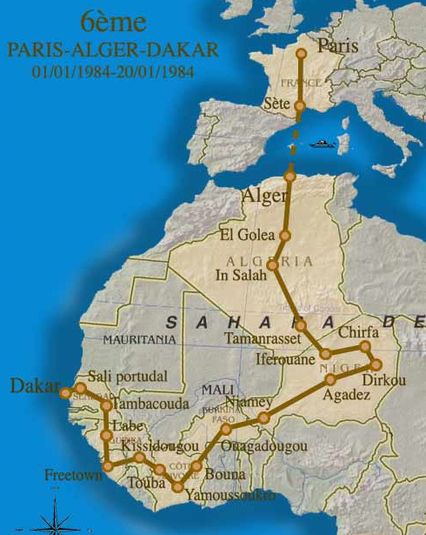
2022 Route
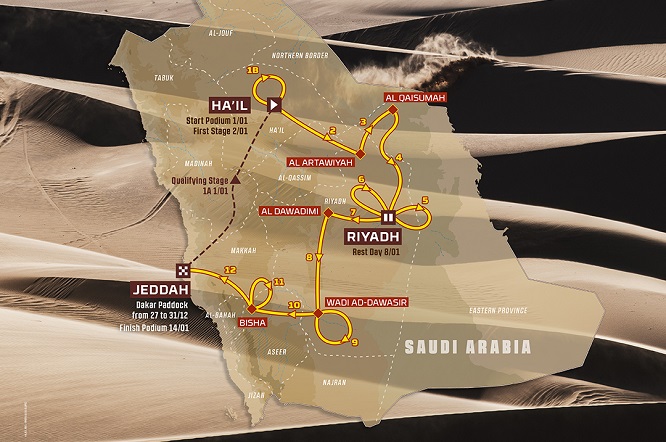
The shortest Dakar in history
The Dakar of 1981 was the shortest edition with 6263 km, followed by the Dakar of 2020 with 7900 km due to the COVID-19 pandemic, which forced the organizers to modify the route and shorten the duration of the race. In addition, some stages were cancelled or shortened due to adverse weather conditions.
The longest Dakar in history
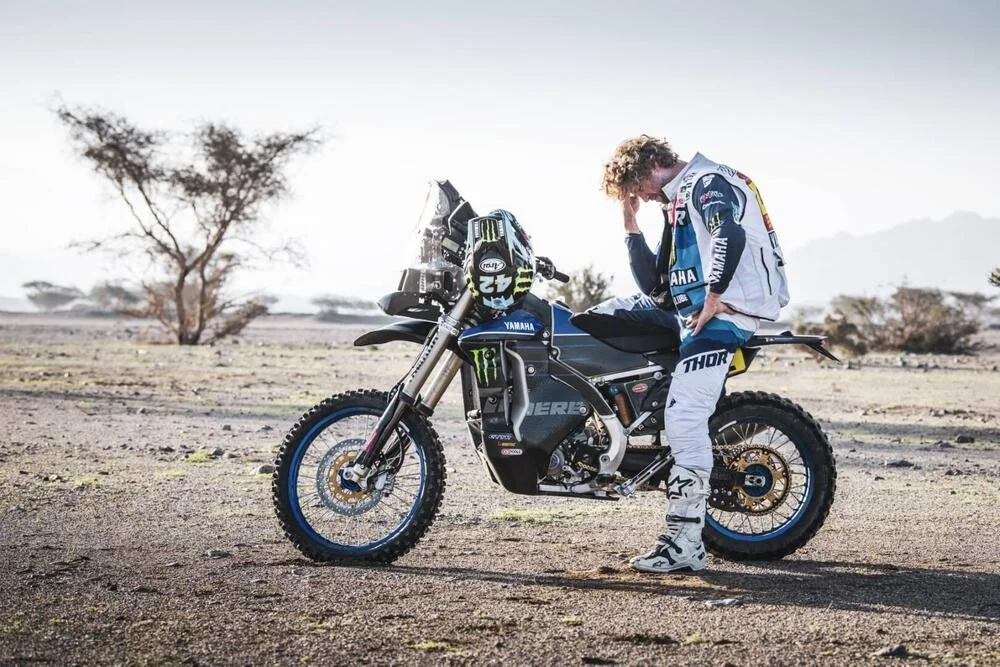
The longest edition was in 1986 with a distance of as much as 15,000km.
Which was the Dakar with the longest special stages?
the 1990 edition of the Paris-Tripoli-Dakar leads the way with the longest sum of special stages, which a whopping 8,564km of time trials
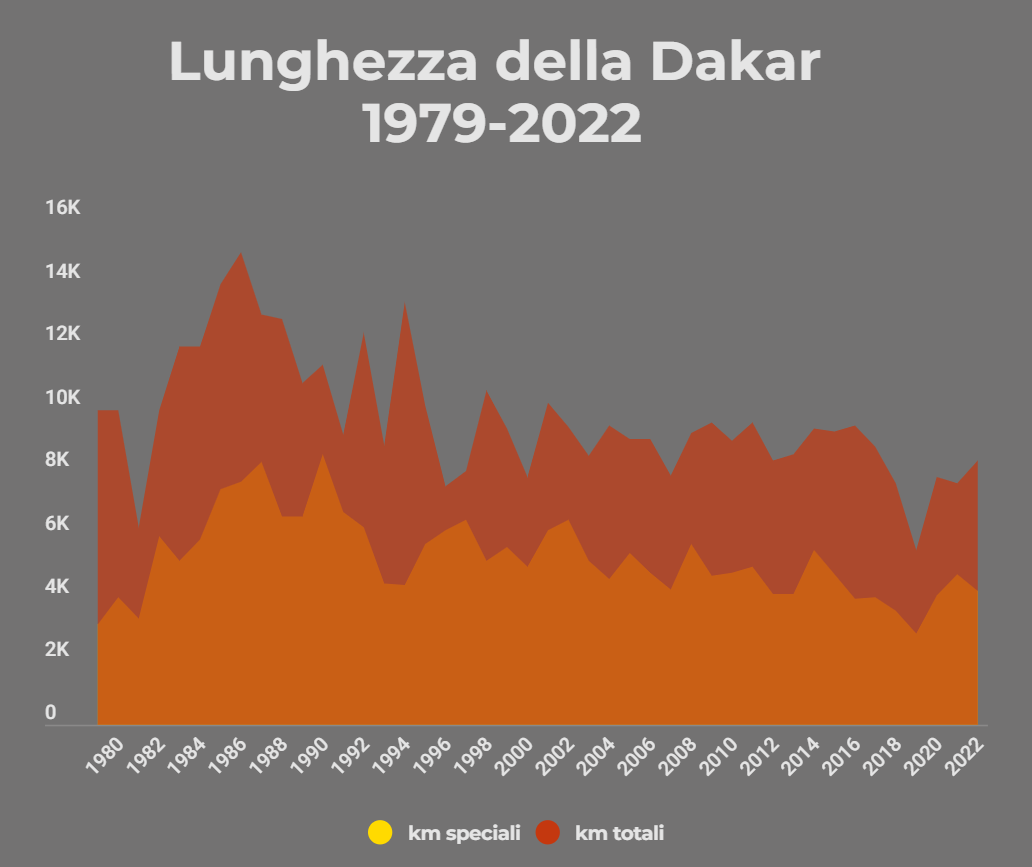
How many countries does the Dakar cross?
In 1983 the rally crosses 8 countries - France, Algeria, Mali, Mauritania, Niger, Upper Volta, Ivory Coast, Senegal while the 2022 edition only crosses Saudi Arabia.
The 1992 year when the rally underwent a major route change arriving in Cape Town was the year with the most countries crossed, as many as 11 ( France, Libya, Niger, Chad, Central African Republic, Cameroon, Gabon, Congo, Angola, Namibia and South Africa).
The record with fewer countries crossed, in addition to 2022, is also from the years 2020 and 2021, during which only Saudi Arabia was passed through and in 2019 Peru
Evolution of the race
The Dakar of 1983 was won in 52 hours, 45 minutes and 51 seconds by Frenchman Auriol, covering 4033 Km of actual special tests with an average speed of 76 Km/h.
In 2022 Sam Sunderland finished the 4258 km of special tests in 38 hours 47 minutes and 30 seconds and an average speed of 109 Km/h.
How fast is the Dakar run?
2022 v.average 109kmh, won by Sam Sunderland, Saudi Arabia
2015 v.average 103kmh, won by Mark Coma, South America
2005 v.average 104kmh, won by Cyril Despres, Europe-Africa
2006 v.average 86kmh won by Marc Coma, Europe-Africa
2003 v.average 97.5kmh won by Richard Sainct, Europe-Africa
2002 v.average 105kmh won by Fabrizio Meoni, Europe-Africa
1983 v.average 76 kmh won by Aubert Auriol, Europe-Africa
The fastest stage in history
In the 13th stage in 2003, won by Fabrizio Meoni, on the ultra-powerful Ktm 950, the average speed marked was 128 kmh over 570km of special stage
Who is the rider who has won the most stages on a motorcycle.
Cyril Despres, tied with Stephan Peterhansel, has won 33 stages in the Dakar. Chapeau.
__Who has managed to win in Europe, Africa, South America and Saudi Arabia?
In motorcycles no one has succeeded, but Stephan Peterhansel has managed to win in the three worlds alternating between early victories in Africa on motorcycles and later victories in cars between Latin America and Arabia.
What is the percentage of retirements over the years?
Analyzing the data in 1983 there was a 68% withdrawal of starters while in 2022 about 42%.
In the table below we can see that the year with the highest percentage of retirements was 1986 with about 79% ( 486 starters but only 100 vehicles arrived at the end of the rally). This edition has been described as the toughest and most tragic of all, in fact the 100 drivers who arrived at the end of the race covered 15,000km of which 7,731 were special stages (third longest ever). Of the 18 stages five were over 900km and one was 1565km! It was also the most tragic edition, during which there were 7 deaths including Thierry Sabine, who died in a helicopter crash.
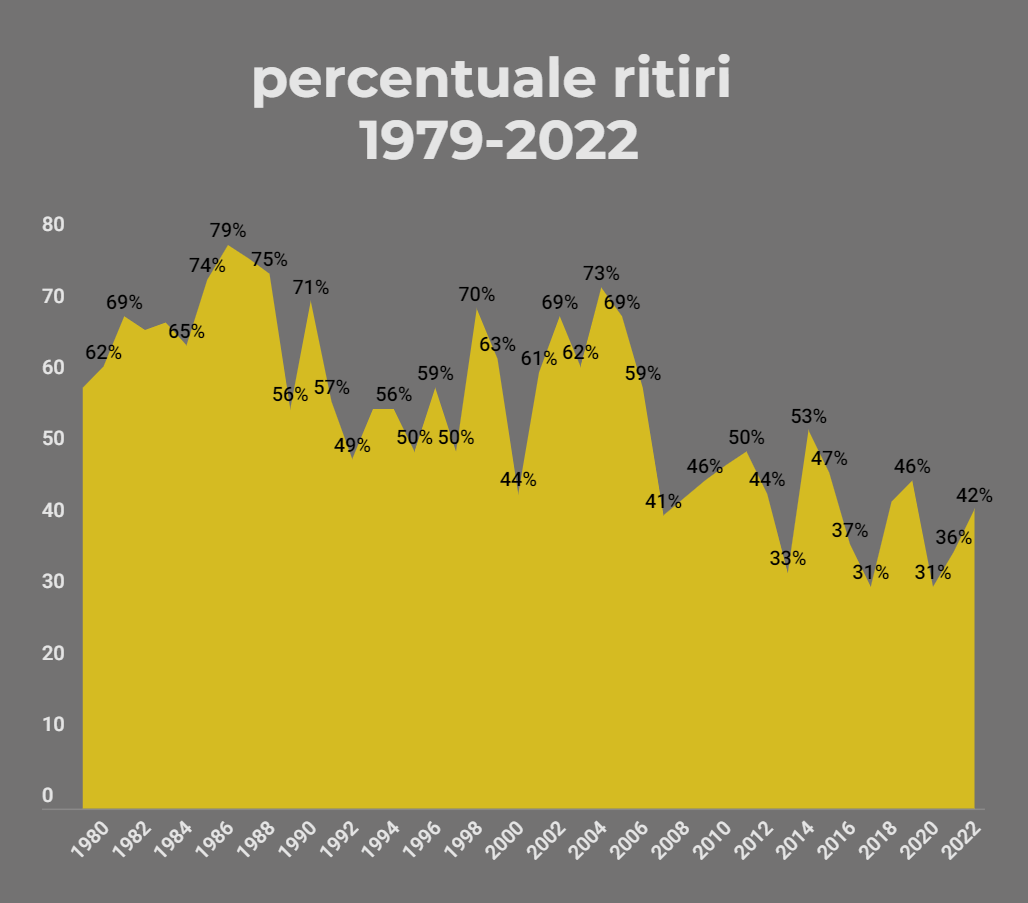
Evolution of motorcycles
In the early days of the Dakar, there was no particular regulation limiting the motorcycles in the race; anyone could take any production motorcycle and equip it as they saw fit to tackle the competition.
The winner of the 1983 Paris-Dakar was the twin-cylinder BMW 980 (as well as the first twin-cylinder to win the rally), which, despite weighing average 50Kg more than its competitors, proved to be a winning machine, thanks to the power of the 60hp engine and its reliability over long distances.
The biggest regulatory breakthrough came in 2005, when twin-cylinder engines were banned, this was to limit top speeds that reached as high as 200km/h. In 2011 the displacement limit was introduced at 450cc also limiting speeds to 150 Km/h.
On the technological level, the motorcycles (and cars) raced with back then were all derived from a development philosophy based on road vehicles, but today engines and chassis are specifically developed for offroad and for the Dakar in particular. KTM was the first to introduce a race-ready Dakar bike to the public back in 2002, with special specifications dedicated to the Rally. Since 2021, KTM has further changed its development philosophy by introducing the perimeter frame derived from enduro bikes.

Evolution of navigation
Until 1983 navigation was supported only by the roadbook paper on blocknotes, which pilots tore up when reaching waypoints, and by the compass until 90. From 1985, the roadbook on roll with hand winding was introduced to avoid losing valuable information in case one took a wrong turn. From 1990 the __roadbook with electronic winding __was introduced, which allowed riders to scroll through the roll without taking their hands off the handlebars.
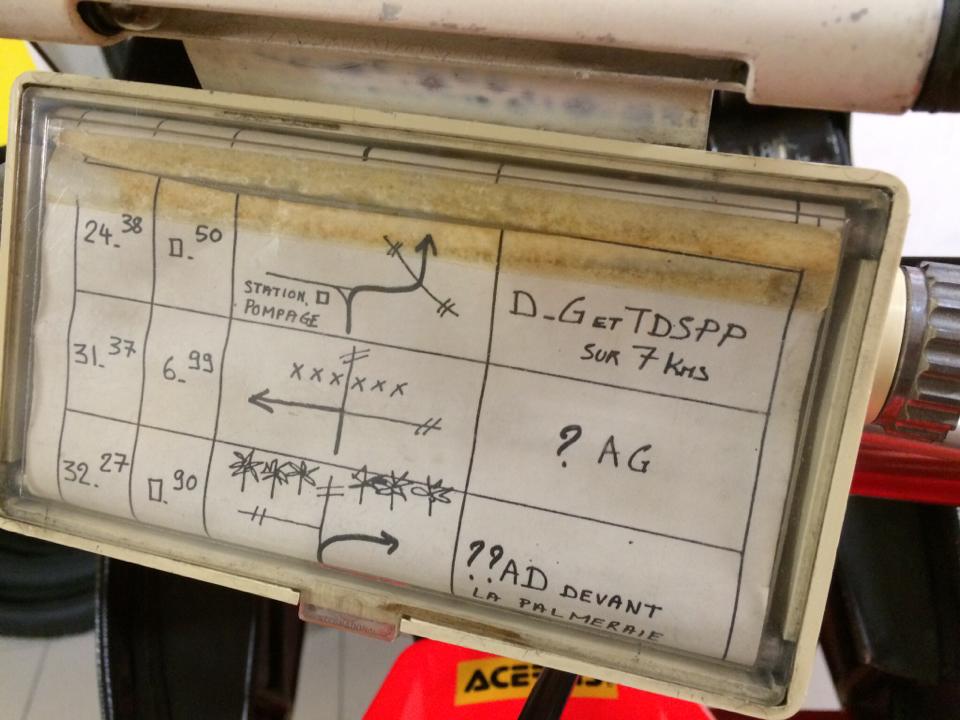
The introduction of GPS and waypoints as a navigation tool occurred in 1990, with important limitations imposed by the U.S. military limiting its accuracy for civilian use to a radius of 500 meters (a problem that was resolved in 2001 with the removal of the limitations).
Today's motorcycles navigate with both the paper roadbook and the gps, the latter being used primarily as proof to the paper data and supporting rider safety.
Want to relive the 1983 Dakar on your bike?
With WHIP you can do that, and it doesn't need a GPS or a roadbook.
All you need is to have WHIP LIVE downloaded to your smartphone, a good bike with at least 450 kilometers of range, a visa that covers all passing countries, a good dose of recklessness and a decade's worth of motorcycle travel experience.
We at WHIP provide you with the real stages of 1983 that you can navigate with the WHIP LIVE app, sorry to say.
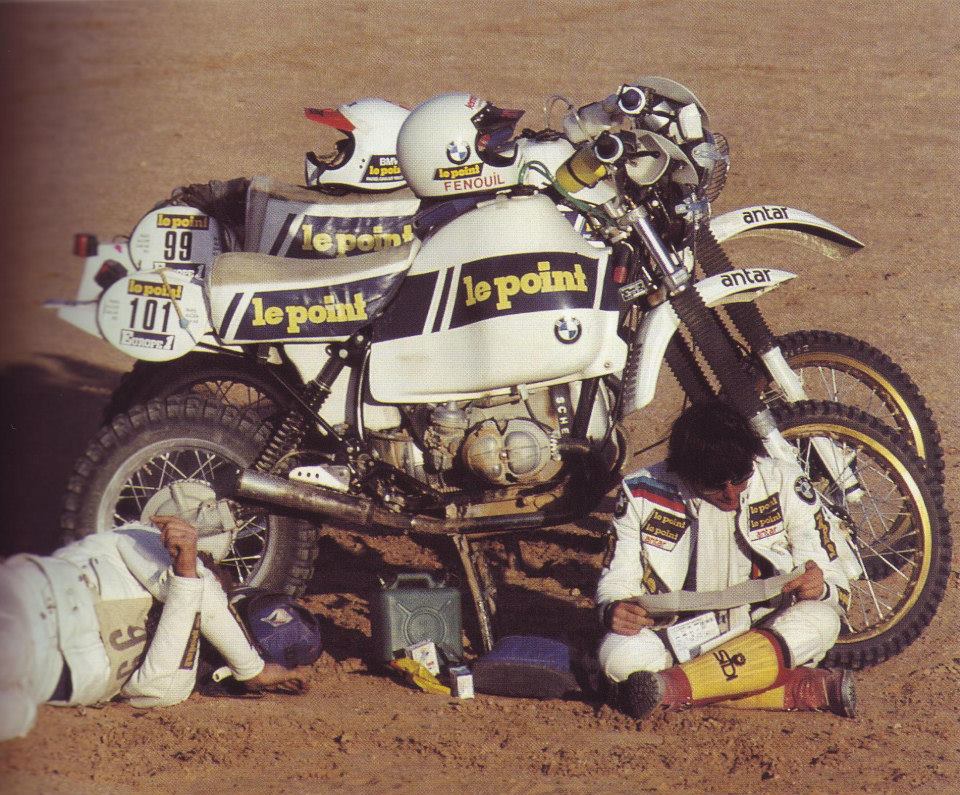 Feouil-e-Scheck-1983
Feouil-e-Scheck-1983
Search "Dakar 1983" inside the app to see the full route.
Prologue a Gremuses (3,6 km)
Prologue a Les Guarrigues (10 km)
Stage 1
Alger – Touggourt ( liaison 771 km)-https://link.whip.live/route/mc4c5ehi
Stage 2
Touggourt – Ouargla (171 km of special)-https://link.whip.live/route/j9poorll
Stage 3
Ouargla – Chebaba (442 km including 239 km of special)-https://link.whip.live/route/socm3bga
Stage 4
Chebaba – Bordj Omar Driss (459 km including 429 km of special)-https://link.whip.live/route/6hsolt5i
Stage 5
Bordj Omar Driss – Illizi (320 km of special)-https://link.whip.live/route/k2t9598c
Stage 6
Illizy – Djanet (401 km of special)-https://link.whip.live/route/8h8kb9qr
Stage 7
Djanet – Chirfa (532 km of special)-https://link.whip.live/route/3r6gsirt
Stage 8
Chirfa – Dirkou (240 km of special)-https://link.whip.live/route/3rkbskah
Stage 9
Dirkou – Agadez (617 km of special)-https://link.whip.live/route/qh8far6f
Stage 10
Agadez – In Gall (115 km of special)-https://link.whip.live/route/neititka Due to a sandstorm, convoy to Nara
Stage 11
Nara – Timbreda (162 km of special)-https://link.whip.live/route/6dccu2lt
Stage 12
Timbreda – Kiffa (trasferimento)-https://link.whip.live/route/rtakk78c
Stage 13
Kiffa – Kaedi (307 km of special)-https://link.whip.live/route/q3cb0p2o
Stage 14
Kaedi – Tiougoune (470 km including 370 km of special)-https://link.whip.live/route/v44dtse9
Stage 15
Tiougoune – Dakar (130 km of special)-https://link.whip.live/route/u64n72d0
Evolution of security
Since the first edition there was the presence of helicopters to support pilot safety. Helicopters have always been a constant during all editions.
During the early years, however, if a pilot got lost, he only had a radio system that operated on only one frequency band, the balise, in order to send the signal to the organization. This system made it possible to send, via radio frequencies, a distress call, but this had to be picked up by the organization by directing the antenna toward the participant. Once the signal was picked up, which then gave the pilot's direction not his position, a signal was received that increased as one got closer to the pilot. If danger loomed during the night you also had the support of colored flares.
With the introduction of GPS in the 1990s, the first satellite rescue systems were born, the balise with gps positioning. This system allowed the participant to send the signal to the satellite which then sent it to the organization. Thanks to this innovation several problems were solved as it was possible to have the exact location of the participant, unlike the previous radio signal.

But let's see what the data says
In 1983, the percentage of total arrivals was 32%, compared to nearly 60% in 2022 while total special stages were 5210 km in 1983 and 4258 km in 2022.
The average percentage of withdrawals in the last 10 years has been 41% approx, while 40 years ago it was around 62% approx.
An interesting statistic to analyze is the average speed during the special stages, which, in 40 years, has increased by as much as 34 km/h. To give perspective to this figure, it is enough to consider the types of the terrain on which the rallies were held, in 2022 the special stages were held almost exclusively on sand, while in 1983 good portions of the trials were on more compacted terrain, making the comparison of speeds even more impressive
In 1983, transfers were almost entirely on dirt given the scarcity of roads in Africa, while in 2022 transfers were made almost entirely on asphalt.
Conclusions
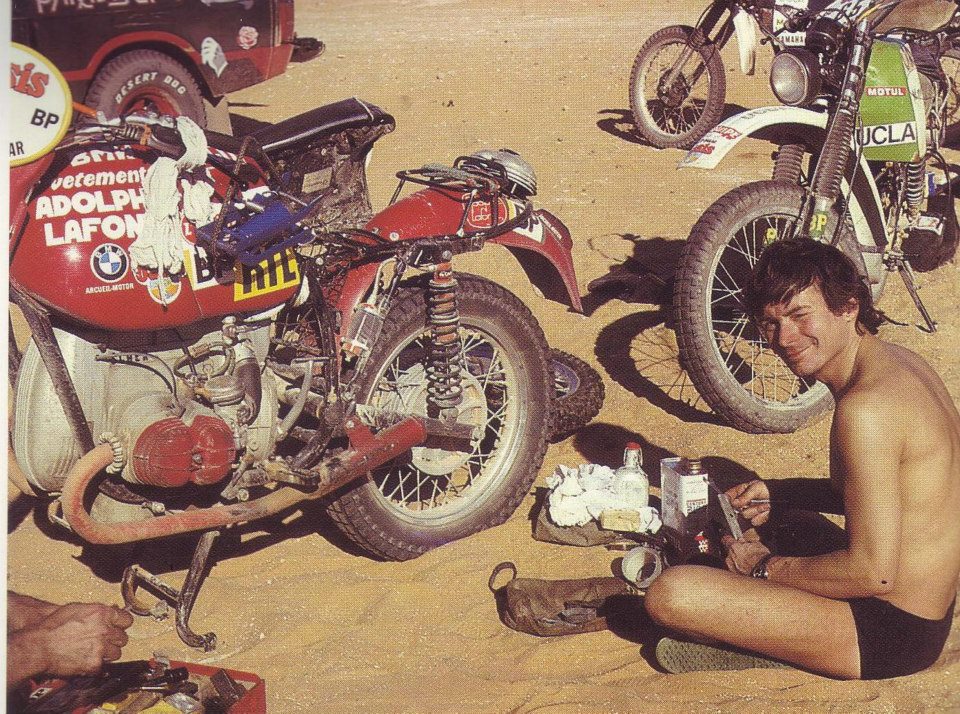
So is the Dakar still the same adventurous race that was run in 1983?
No! Or rather: over the years, the Dakar has undergone very important changes, first and foremost the natural technical evolution of everything related to motorcycles, safety, organization and the preparation of the riders themselves, who can now call themselves real professional athletes.
Forty years ago the real goal was not to win or get on the podium, but to get to the back of the race. Now riders are mainly focused on not making mistakes in special stages and studying strategies favorable to the final result in the standings,
Modern Dakars are more focused on speed and intensity of riding, rather than extreme endurance thus shifting the "playing field" and changing the factors crucial to the success of what has been and still remains a true feat on wheels.
On balance, we can say that the first Dakars were a truly physically exhausting experience, given the length of the transfers (which were done on dirt roads) and the little comfort offered by the vehicles of the time.
And how will the 2023 dakar evolve?
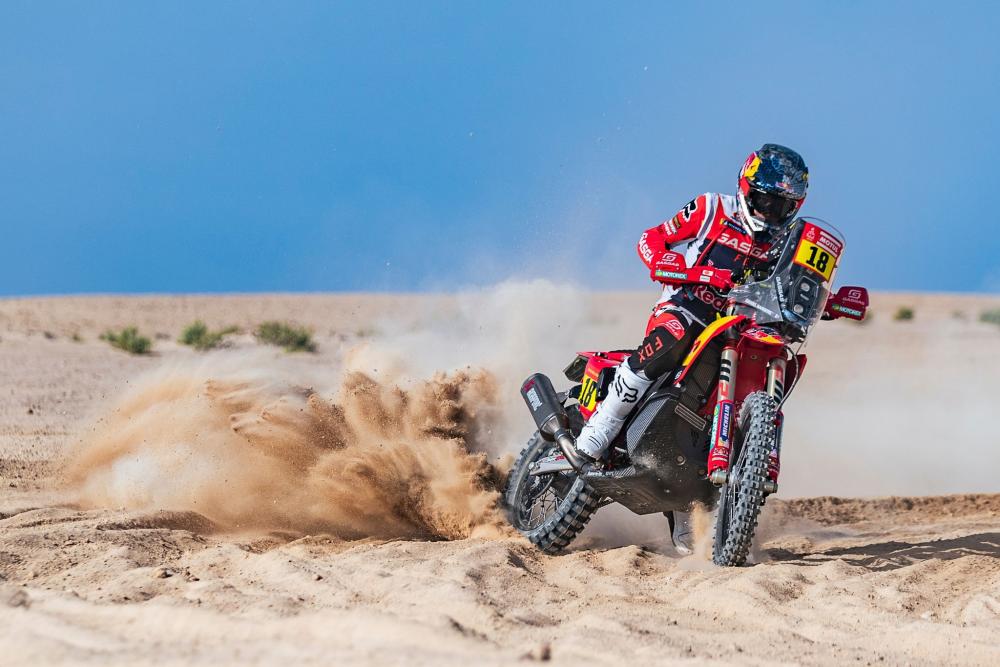
A major update planned for the 2023 edition is the introduction of differentiated roadbooks. Each participant will therefore have different waypoints from the other competitors, this is to prevent those who start behind from having an advantage by following their opponents' tracks.
Do you want to follow the Dakar with us?
The best routes of 2022
Enduro, the best routes of 2022
These are the 7 most popular routes on WHIP in 2022. Find out them all with details and elevation, navigate them or download the gpx to retrace them at the first opportunity, they are really worth it!
MTB, the top 7 routes of 2022
These are the 7 most popular routes on WHIP in 2022. Check out this year's riders' favorite routes, navigate them or download the gpx to retrace them at the earliest opportunity, it's really worth it!
Moto Adventure, the best routes of 2022 [ENG].
These are the 7 most popular routes on WHIP in 2022. Find out them all with details and elevation, navigate them or download the gpx to retrace them at the first opportunity, they are really worth it!
Road bikes, the top 7 best routes of 2022
These are the 7 most popular routes on WHIP in 2022. Find out them all with details and elevation, navigate them or download the gpx to retrace them at the first opportunity, they are really worth it!
Trekking and hiking, discover the best 7 trails of 2022
These are the 7 most popular trails on WHIP in 2022. Find out this year's hikers' favorite trails, navigate them or download the gpx to retrace them at the first opportunity, they are really worth it!
